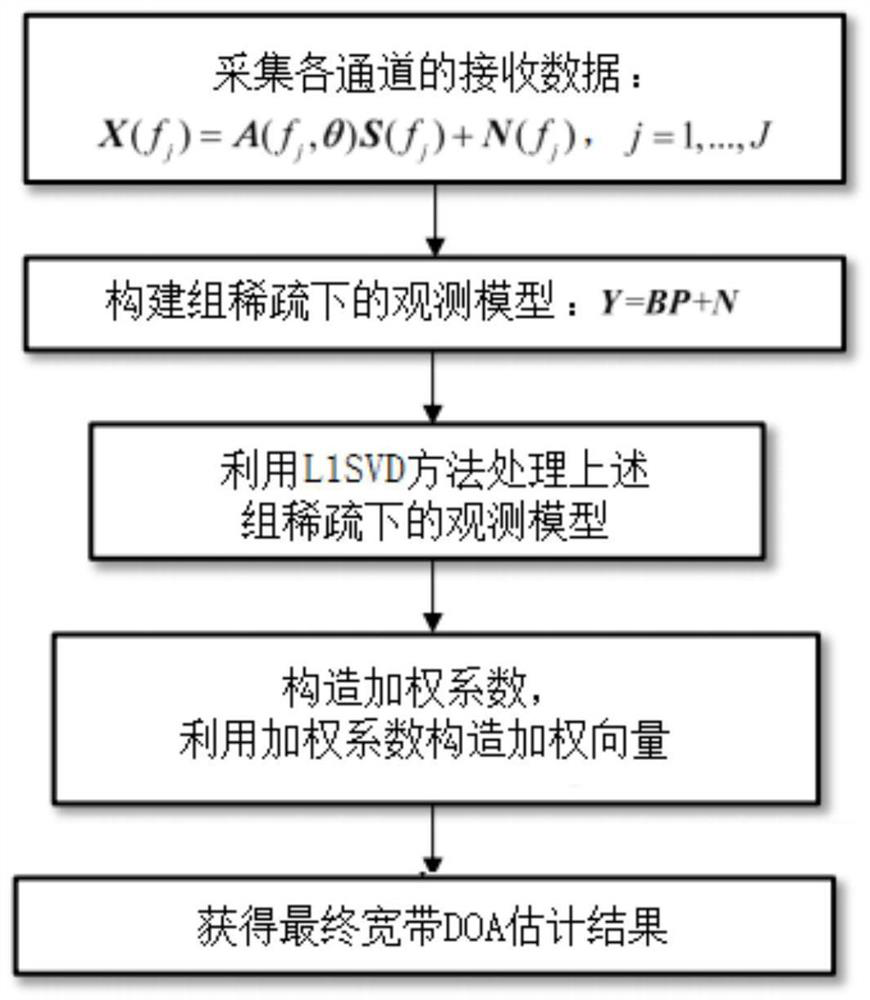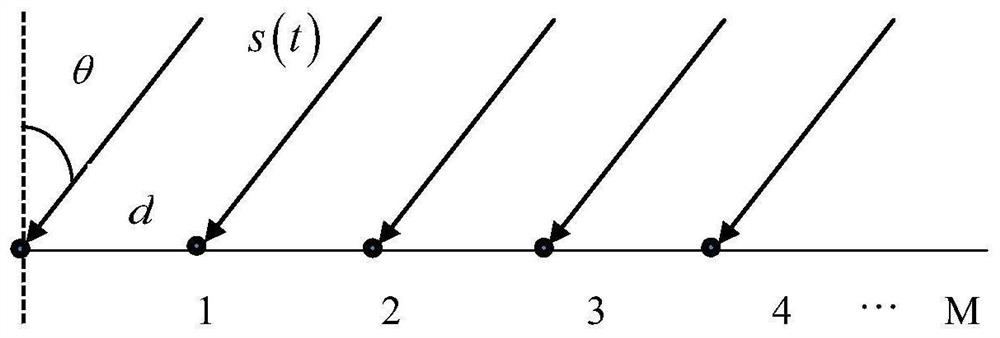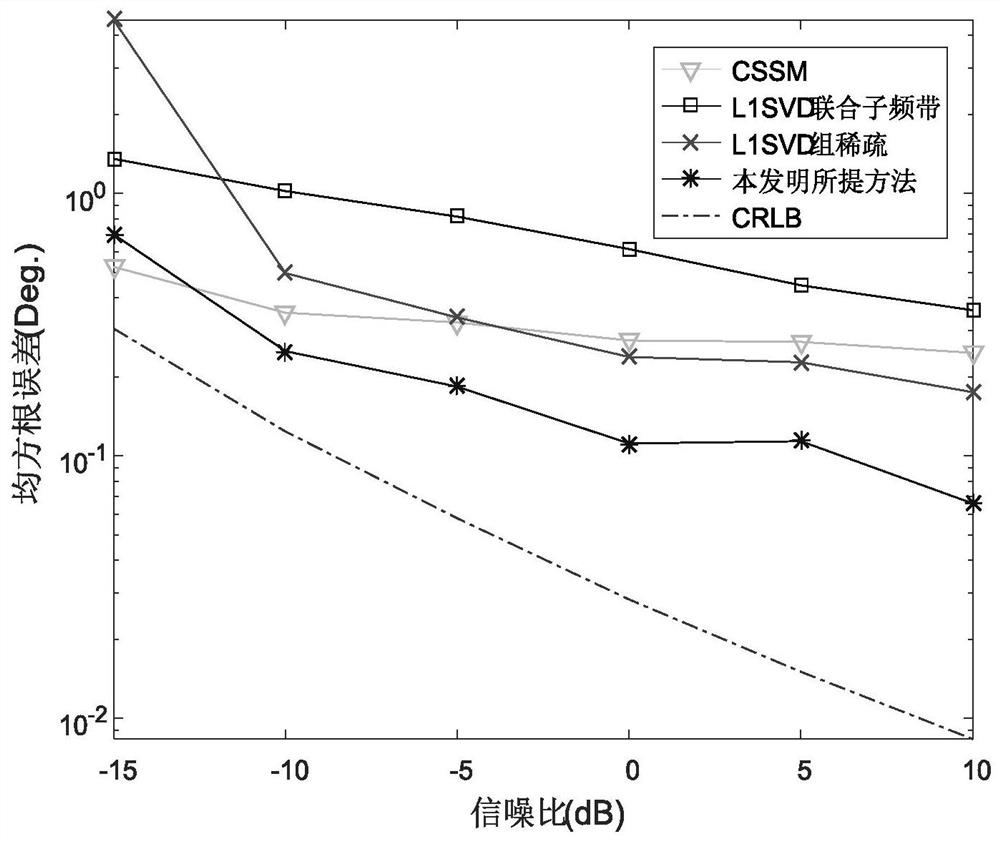Weighted broadband direction-of-arrival estimation method based on group sparsity
A direction estimation and group sparse technology, applied in the field of signal processing, can solve problems to be improved, and achieve the effect of improving resolution and estimation accuracy, improving compression performance and real-time performance, and ensuring sparsity
- Summary
- Abstract
- Description
- Claims
- Application Information
AI Technical Summary
Problems solved by technology
Method used
Image
Examples
Embodiment
[0069] A weighted L1SVD method for estimation of the direction of arrival of broadband array signals based on group sparsity, such as figure 1 and figure 2 , where the airspace signal is a broadband incident signal, and the specific steps include:
[0070] S1, collect the received data of each channel;
[0071] Consider K broadband far-field signals s(t) at incident angle θ={θ 1 ,θ 2 …, θ K} is incident on a uniform linear array ULA composed of M (M>K) omnidirectional array elements, assuming that the duration of the observed array element output is long enough, the output data received by the array is divided into L non-overlapping Sub-sections, and then perform J-point discrete Fourier transform (Discrete Fourier Transform, DFT) on each piece of observation data, and convert to the frequency domain to obtain:
[0072] X(f j ) = [X 1 (f j ),X 2 (f j ),…,X L (f j )]
[0073] =A(f j )S(f j )+N(f j )
[0074] =A(f j )[S 1 (f j ), S 2 (f j ),…,S L (f j )]...
PUM
 Login to View More
Login to View More Abstract
Description
Claims
Application Information
 Login to View More
Login to View More - R&D
- Intellectual Property
- Life Sciences
- Materials
- Tech Scout
- Unparalleled Data Quality
- Higher Quality Content
- 60% Fewer Hallucinations
Browse by: Latest US Patents, China's latest patents, Technical Efficacy Thesaurus, Application Domain, Technology Topic, Popular Technical Reports.
© 2025 PatSnap. All rights reserved.Legal|Privacy policy|Modern Slavery Act Transparency Statement|Sitemap|About US| Contact US: help@patsnap.com



